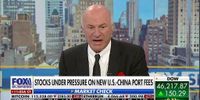Concerns about a potential artificial intelligence (AI) bubble have surged to the forefront of financial discourse, with investors, industry leaders, and analysts all weighing in on whether the current AI boom is sustainable—or headed for a sharp correction. The latest Bank of America Global Fund Manager Survey, released on October 14, 2025, revealed that for the first time in the survey’s history, fund managers identified an AI bubble as a top market risk. This marks a significant shift in sentiment, as just a month ago, nearly half of respondents dismissed such concerns outright, according to Bank of America’s findings.
The October survey found that a record 54% of global fund managers now believe AI stocks are in a bubble, a dramatic about-turn from September. Fears that global stocks are overvalued also reached new heights in the latest poll, reflecting a broader anxiety about the meteoric rise of technology shares this year.
High-profile tech leaders have added fuel to the debate. OpenAI CEO Sam Altman, whose company’s release of ChatGPT in late 2022 set off the current AI investment frenzy, has been candid about his own reservations. In an August 2025 interview with The Verge, Altman said, “Are we in a phase where investors as a whole are overexcited about AI? My opinion is yes.” Yet, he also underscored the transformative potential of the technology, adding, “Is AI the most important thing to happen in a very long time? My opinion is also yes.”
Amazon founder Jeff Bezos echoed these sentiments earlier in October, cautioning that the current excitement is making it difficult for investors to distinguish between good and bad ideas. “Every experiment gets funded, every company gets funded,” Bezos observed. “Investors have a hard time in the middle of this excitement distinguishing between the good ideas and the bad ideas.” He likened the present moment to the biotech bubble of the 1990s, noting that while many investors lost money, the era also produced some lifesaving drugs.
Meanwhile, Nvidia has emerged as the poster child of the AI boom. Once known primarily for its graphics chips in gaming, Nvidia has become the world’s most valuable public company, surpassing a $4 trillion market capitalization in July 2025 and currently sitting at a staggering $4.5 trillion. The company’s financials are as eye-popping as its market value: On August 27, 2025, Nvidia reported a net income of $26.4 billion for Q2 2026, a 59% increase over the previous year. Revenue jumped 56% to $46.7 billion, with a robust gross margin of 72.4%. Diluted earnings per share also soared to $1.08, up from $0.67 in Q2 FY 2025. Looking ahead, Nvidia forecasts Q3 fiscal 2026 revenue of $54.0 billion, plus or minus 2%, and expects its gross margin to remain strong at 73.3%.
Other tech giants have also ridden the AI wave. Microsoft, Apple, Amazon, Google, and Meta have all posted impressive gains over the past three years, propelled by vast investments in AI initiatives. Oracle, for example, saw its stock surge 40% in a single day this September after projecting massive revenue from multibillion-dollar cloud computing contracts. These outsized returns have only heightened concerns that stock prices are outpacing underlying value—a classic sign of a bubble in the making.
James Angel, an associate professor at Georgetown University’s McDonough School of Business, summed up the uncertainty: “The question is — are we in an AI bubble? You never really know until afterwards whether today’s prices were justified by the future cash flows of these companies or whether investors were overly exuberant.”
The debate is far from one-sided. On Fox Business Channel on October 14, 2025, investor Kevin O’Leary pushed back against the doom-and-gloom narrative, arguing that the AI investment surge is not yet a bubble and advising investors to “stay the course.” His comments reflect a faction of the market that sees the current enthusiasm as justified by real technological breakthroughs and surging demand for AI infrastructure.
Mark Zuckerberg, CEO of Meta, has also weighed in, acknowledging on the ACCESS podcast the possibility of an AI bubble. “I do think that there’s definitely a possibility, at least empirically, based on past large infrastructure buildouts and how they led to bubbles, that something like that would happen here,” Zuckerberg noted. Former Intel CEO Pat Gelsinger, speaking to CNBC’s Squawk Box, was more direct: “Are we in an AI bubble? Of course!” However, he predicted that any correction is unlikely to arrive for several years.
Industry analysts have tried to draw distinctions between the current AI boom and previous speculative bubbles, such as the dotcom bust of the early 2000s. Gartner Senior Director Analyst Will Sommer, in a recent report, argued that the impending agentic AI market correction is “distinct from speculative bubbles fueled by systemic financial engineering, fraud or policy.” He emphasized that the underlying product—agentic AI—is sound, and that current market corrections are a regular part of the product life cycle. Still, Sommer warned that a “speculative bubble” could form if investment becomes detached from AI’s intrinsic potential to deliver tangible economic value.
Bank of America analysts have also sought to contextualize AI “doom headlines.” Analyst Vivek Arya and his team point to several key differences between the ongoing AI buildout and the dotcom era. For one, AI computing power is being utilized at high rates, unlike the underused “dark fiber” of the dotcom bust. Capital expenditure intentions of top cloud providers are on track, and the U.S. Federal Reserve is more likely to lower than raise rates—unlike prior market crashes, which coincided with rising rates. Nvidia’s valuation, while lofty, is not as extreme as the more than 100 multiple price-to-earnings ratios seen among dotcom leaders like Cisco and Yahoo.
Nevertheless, Arya’s team flagged several downside risks for Nvidia, including weakness in the consumer gaming market, competition from major firms, unpredictable sales in new enterprise and data center markets, and enhanced government scrutiny of its dominant position in AI chips. They also highlighted the risk of restrictions on compute shipments to China, though they noted that direct exposure to China is relatively low for AI vendors.
So, is the AI boom a bubble or a harbinger of a new technological era? The jury is still out. As Altman, Bezos, Zuckerberg, and others have noted, the excitement is palpable—and perhaps justified—but history cautions that exuberance can quickly turn to regret if expectations outpace reality. For now, investors and industry watchers will have to navigate the hype with both optimism and caution, keeping a close eye on whether the promise of AI can deliver on its sky-high expectations.


